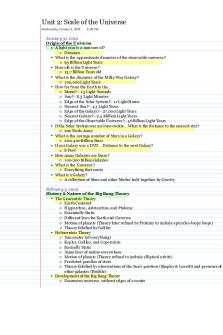Guidelines on the implementation of the Australasian Triage Scale in Emergency Departments PDF

| Title | Guidelines on the implementation of the Australasian Triage Scale in Emergency Departments |
|---|---|
| Course | Bachelor Of Nursing |
| Institution | Australian Catholic University |
| Pages | 8 |
| File Size | 283.3 KB |
| File Type | |
| Total Downloads | 28 |
| Total Views | 143 |
Summary
ATS for A+E departments...
Description
GUIDELINES Document No: Approved: Last Revised: Version No:
G24 Nov-00 Jul-16 V04
GUIDELINES ON THE IMPLEMENTATION OF THE AUSTRALASIAN TRIAGE SCALE IN EMERGENCY DEPARTMENTS Con Conten ten tents ts 1.
2.
3.
General Principles ................................................................................................................ 2 1.1
Function of Triage .................................................................................................... 2
1.2
The Triage Assessment ............................................................................................ 2
1.3
Safety at Triage ......................................................................................................... 2
1.4
Time to Treatment ................................................................................................... 2
1.5
Re-triage ................................................................................................................... 2
1.6
Triage Colours........................................................................................................... 3
Extended Definitions and Explanatory Notes .................................................................... 3 2.1
Arrival Time .............................................................................................................. 3
2.2
Time of Medical Assessment and Treatment ......................................................... 3
2.3
Waiting Time ............................................................................................................ 3
2.4
Documentation Standards ....................................................................................... 3
Specific Conventions ........................................................................................................... 4 3.1
4.
Paediatrics ................................................................................................................ 4
3.2
Trauma ...................................................................................................................... 4
3.3
Behavioural Disturbance .......................................................................................... 4
Clinical Descriptors .............................................................................................................. 4 4.1
Source ....................................................................................................................... 4
4.2
Most Urgent Features Determine Category ........................................................... 4
5.
AUSTRALASIAN TRIAGE SCALE: DESCRIPTORS FOR CATEGORIES ..................................... 5
6.
Document Review ............................................................................................................... 8 6.1
Responsibilities ......................................................................................................... 8
6.2
Revision History ........................................................................................................ 8
1 of 8
(Guidelines on the Implementation of the ATS in Emergency Departments)
1.
GENERAL PRINCIPLES
1.1
Function of Triage
(G24)
Triage is an essential function in Emergency Departments (EDs), where many patients may present simultaneously. It aims to ensure that patients are treated in the order of their clinical urgency which refers to the need for time-critical intervention. Clinical urgency is not synonymous with complexity or severity. Triage also allows for the allocation of the patient to the most appropriate assessment and treatment area, and contributes information that helps to describe the departmental case-mix. Changing models of care in some EDs (for example streaming, clinical initiatives nurses, triage liaison physicians) do not preclude the need for triage.
1.2
The Triage Assessment
Triage is the first point of public contact with the ED. The triage assessment generally should take no more than two to five minutes with a balanced aim of speed and thoroughness being the essence. The triage assessment involves a combination of the presenting problem and general appearance of the patient, and may be combined with pertinent physiological observations. Vital signs should only be measured at triage if required to estimate urgency, or if time permits. Any patient identified as ATS Category 1 or 2 should be taken immediately into an appropriate assessment and treatment area. A more complete nursing assessment should be done by the treatment nurse receiving the patient. The triage assessment is not intended to make a diagnosis. The initiation of investigations or referrals from triage is not precluded if time permits. In Australasia, triage is carried out by staff members who are both specifically trained and experienced.
1.3
Safety at Triage
It is essential that all EDs plan for the potential risk of aggressive behaviour of patients or their relatives at triage. There must be a safe and non-threatening physical environment, which is as private as possible whilst not exposing staff to risk. Front line staff should have minimisation-of-aggression training and protocols and procedures for dealing with challenging behaviour. Where the safety of staff and/or other patients is under threat, staff and patient safety should take priority and an appropriate security response should take place prior to clinical assessment and treatment.
1.4
Time to Treatment
The time to treatment described for each ATS Category refers to the maximum time a patient in that category should wait for assessment and treatment. In the more urgent categories, assessment and treatment should occur simultaneously. Ideally, patients should be seen well within the recommended maximum times. Implicit in the descriptors of Categories 1 to 4 is the assumption that the clinical outcome may be affected by delays to assessment and treatment beyond the recommended times. The maximum waiting time for Category 5 represents a standard for service provision. Where a patient has a waiting time less than or equal to the maximum waiting time defined by their ATS Category, the ED is deemed to have achieved the performance indicator for that presentation. Achievement of indicators should be recorded and compared between large numbers of presentations.
1.5
Re-triage
If a patient’s condition changes while one is waiting for the treatment, or if additional relevant information becomes available that impacts on the patient’s urgency, the patient should be re-triaged. Both the initial triage and any subsequent categorisations should be recorded, and the reason for the re-triage documented.
Jul-16
2 of 8
(Guidelines on the Implementation of the ATS in Emergency Departments)
1.6
(G24)
Triage Colours
Emergency Departments throughout Australia and New Zealand utilise a range of ED Information Systems (EDIS) in order to provide key functions, such as triage management and assessment. Using these systems, EDs can choose to identify each ATS Category using a specific colour. Red (Category 1), Orange (Category 2), Green (Category 3), Blue (Category 4) and White (Category 5), are commonly utilised by EDs in order to identify each ATS Category, and are recommended to be the standard colours used throughout Australia and New Zealand. However, colour designations should only be used as an adjunct to the numerical designations identifying each triage category.
2.
EXTENDED DEFINITIONS AND EXPLANATORY NOTES
2.1
Arrival Time
The arrival time is the first recorded time of contact between the patient and ED staff. Triage assessment should occur at this point.
2.2
Time of Medical Assessment and Treatment
Although important assessment and treatment may occur during the triage process, this time represents the start of the care for which the patient is presented. Usually it is the time of first contact between the patient and the doctor initially responsible for their care. This is often recorded as ‘Time seen by doctor’. Where a patient in the ED has contact exclusively with nursing staff acting under the clinical supervision of a doctor, it is the time of first nursing contact. This is often recorded as ‘Time seen by nurse’. Where a patient is treated according to a documented, problem specific clinical pathway, protocol or guideline approved by the Director of Emergency Medicine, it is the earliest time of contact between the patient and staff implementing this protocol. This is often recorded as the earlier of ‘Time seen by nurse’, “Time seen by nurse practitioner” or Time see by doctor’.
2.3
Waiting Time
This is the difference between the time of arrival and the time of initial medical assessment and treatment. A recording accuracy to within the nearest minute is appropriate.
2.4
Documentation Standards
The documentation of the triage assessment should include at least the following essential details: Date and time of assessment Name of triage officer Chief presenting problem(s) Limited, relevant history Relevant assessment findings Initial triage category allocated
Jul-16
3 of 8
(Guidelines on the Implementation of the ATS in Emergency Departments)
(G24)
Re-triage category with time and reason Assessment and treatment area allocated Any diagnostic, first aid or treatment measures initiated
3.
SPECIFIC CONVENTIONS
3.1
Paediatrics
The same standards for triage categorisation should apply to all ED settings where children are seen – whether purely Paediatric or mixed departments. All five triage categories should be used in all settings. Children should be triaged according to objective clinical urgency. Individual departmental policies such as ‘fast-tracking’ of specific patient populations should be separated from the objective allocation of a triage category.
3.2
Trauma
Individual departments may have policies that provide for immediate team responses to patients meeting certain criteria. However, the triage category should be allocated according to their objective clinical urgency.
3.3
Behavioural Disturbance
Patients presenting with mental health or behavioural problems should be triaged according to their clinical and situational urgency. Where physical and behavioural problems co-exist, the highest appropriate triage category should be applied based on the combined presentation. While some acutely-disturbed patients may require an immediate clinical response (perhaps combined with a security response) to ensure their safety, it is recognised that some individuals entering an ED and posing an immediate threat to staff (e.g. brandishing a dangerous weapon) should not receive a clinical response until the safety of staff can be ensured. In this situation, staff should act so as to protect themselves and other ED patients and obtain immediate intervention from security staff and/or the police service. Once the situation is stabilised, a clinical response can take place as (and if) required, and triage should reflect clinical and situational urgency. Individual departments may have procedures and assessment tools to assist with identifying at risk mental health patients. These are considered as supportive to initial triage and may be applied following formal triage assessment.
4.
CLINICAL DESCRIPTORS
4.1
Source
The listed clinical descriptors for each category are based on available research data where possible, as well as expert consensus. However, the list is not intended to be exhaustive nor absolute and must be regarded as indicative only. Absolute physiological measurements must be taken as the sole criterion for allocation to an ATS category. Senior clinicians should exercise their judgement, and where there is doubt, err on the side of caution.
4.2
Most Urgent Features Determine Category
The most urgent clinical feature identified, determines the ATS category. Once a high-risk feature is identified, a response commensurate with the urgency of that feature should be initiated.
Jul-16
4 of 8
(Guidelines on the Implementation of the ATS in Emergency Departments)
5.
(G24)
AUSTRALASIAN TRIAGE SCALE: DESCRIPTORS FOR CATEGORIES ATS Category
Response
Category 1
Immediate simultaneous assessment and treatment
Description of Category
Immediately LifeThreatening Conditions that are threats to life (or imminent risk of deterioration) and require immediate aggressive intervention.
Clinical Descriptors (indicative only) Cardiac arrest Respiratory arrest Immediate risk to airway – impending arrest Respiratory rate...
Similar Free PDFs

Triage, emergency department
- 7 Pages

Emergency Nursing. Triage. Black tag
- 20 Pages

On the Suffering in the World
- 9 Pages
Popular Institutions
- Tinajero National High School - Annex
- Politeknik Caltex Riau
- Yokohama City University
- SGT University
- University of Al-Qadisiyah
- Divine Word College of Vigan
- Techniek College Rotterdam
- Universidade de Santiago
- Universiti Teknologi MARA Cawangan Johor Kampus Pasir Gudang
- Poltekkes Kemenkes Yogyakarta
- Baguio City National High School
- Colegio san marcos
- preparatoria uno
- Centro de Bachillerato Tecnológico Industrial y de Servicios No. 107
- Dalian Maritime University
- Quang Trung Secondary School
- Colegio Tecnológico en Informática
- Corporación Regional de Educación Superior
- Grupo CEDVA
- Dar Al Uloom University
- Centro de Estudios Preuniversitarios de la Universidad Nacional de Ingeniería
- 上智大学
- Aakash International School, Nuna Majara
- San Felipe Neri Catholic School
- Kang Chiao International School - New Taipei City
- Misamis Occidental National High School
- Institución Educativa Escuela Normal Juan Ladrilleros
- Kolehiyo ng Pantukan
- Batanes State College
- Instituto Continental
- Sekolah Menengah Kejuruan Kesehatan Kaltara (Tarakan)
- Colegio de La Inmaculada Concepcion - Cebu












